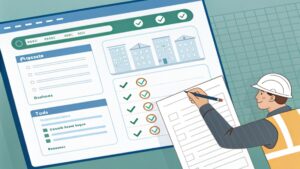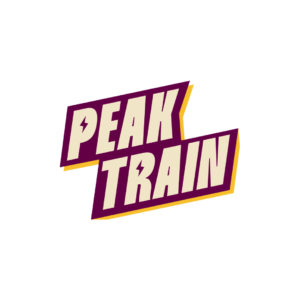How to Master Rapid Planning for Better Time Management
Time management is essential for achieving success, both professionally and personally. If you often feel overwhelmed by endless to-do lists and missed deadlines, it’s time to embrace a structured approach. This is where rapid planning comes into play.
Rapid planning is a goal-oriented method designed to streamline your workflow, increase efficiency, and help you achieve meaningful results faster. By mastering this approach, you can take control of your schedule and accomplish more in less time.
In this guide, you’ll learn the principles of rapid planning, how to implement it, and actionable strategies to maximize its effectiveness.
Understanding Rapid Planning
What is Rapid Planning?
Rapid planning is a time management approach that focuses on setting clear objectives, aligning them with purpose, and executing them through an actionable strategy. Unlike traditional planning methods that emphasize task lists, rapid planning revolves around results and motivation.
Why Use Rapid Planning?
- Helps you stay focused on long-term goals
- Eliminates unnecessary tasks and distractions
- Aligns actions with meaningful outcomes
- Enhances productivity by prioritizing high-impact tasks
The Core Principles of Rapid Planning
To implement rapid planning effectively, you need to understand its core principles:
Clarity
Clearly define your objectives. The more specific you are about your goals, the easier it is to create a structured plan.
Focus
Prioritize high-impact tasks that contribute the most toward your desired results. Avoid wasting time on low-value activities.
Action
Transform your goals into actionable steps. A plan without execution is ineffective.
Flexibility
Stay adaptable. If circumstances change, adjust your approach without losing sight of your end goal.
The Rapid Planning Formula
Rapid planning follows a structured formula known as the RPM (Results, Purpose, Massive Action Plan) model:
Result-Oriented Approach
- Define exactly what you want to achieve.
- Example: Instead of “Improve my productivity,” specify “Complete all pending reports by Friday.”
Purpose-Driven Motivation
- Ask yourself “Why is this important?”
- Example: “Completing reports on time will help me stay ahead of deadlines and reduce stress.”
Massive Action Plan (MAP)
- Break down your goal into step-by-step actions.
- Example: “Set aside 2 hours daily for focused work, eliminate distractions, and review progress every evening.”
Steps to Implement Rapid Planning
Follow these steps to incorporate rapid planning into your routine:
Step 1: Set Clear and Achievable Goals
- Define SMART goals (Specific, Measurable, Achievable, Relevant, Time-bound).
- Example: “Increase client engagement by 20% in the next three months.”
Step 2: Identify and Align with Your Purpose
- Understand why the goal matters to you.
- Example: “Improving client engagement will help grow my business and enhance customer satisfaction.”
Step 3: Create a Structured Action Plan
- List actionable steps required to reach your goal.
- Example: “Develop a weekly content strategy, host Q&A sessions, and engage with customers daily.”
Step 4: Track and Adjust for Continuous Improvement
- Regularly review progress.
- Make adjustments based on feedback and results.
Benefits of Rapid Planning
Adopting rapid planning can bring numerous benefits, including:
- Increased Productivity – Focus on tasks that generate meaningful results.
- Reduced Procrastination – Clear objectives prevent delays.
- Better Prioritization – Helps differentiate between urgent and non-urgent tasks.
- Efficient Decision-Making – Having a structured plan simplifies choices.
Common Mistakes to Avoid
Many people struggle with time management due to these mistakes:
- Setting Vague Goals – Unclear objectives lead to confusion and inefficiency.
- Ignoring Purpose Alignment – Without motivation, it’s easy to lose focus.
- Overloading with Tasks – Doing too much at once can lead to burnout.
- Failing to Track Progress – Regular reviews are necessary to stay on course.
Tools and Techniques to Enhance Rapid Planning
To maximize the effectiveness of rapid planning, consider using these tools:
Digital Planning Tools
- Trello, Asana, and Notion for task organization.
- Google Calendar for scheduling and time-blocking.
Time-Blocking Techniques
- Allocate dedicated time slots for focused work.
- Example: Block 9 AM – 11 AM for deep work without interruptions.
Prioritization Frameworks
- Eisenhower Matrix – Categorize tasks based on urgency and importance.
- 80/20 Rule (Pareto Principle) – Focus on the 20% of tasks that generate 80% of results.
Rapid Planning in Remote Work
For remote employees, rapid planning can be a game-changer. Here’s how you can optimize your workflow:
Stay Disciplined
- Create a dedicated workspace.
- Stick to a structured schedule to avoid distractions.
Use Automation Tools
- Automate repetitive tasks using tools like Zapier.
- Reduce manual workload to focus on high-value activities.
Enhance Communication
- Use Slack or Microsoft Teams for better collaboration.
- Keep your team informed about progress and challenges.
Conclusion
Mastering rapid planning is key to effective time management. By focusing on clear objectives, aligning them with purpose, and creating actionable strategies, you can boost your productivity and achieve your goals faster.
To get started, implement the RPM model in your daily workflow, track your progress, and make adjustments as needed. With practice, you’ll experience greater efficiency and a structured approach to time management.
Are you ready to take control of your time? Start using rapid planning today and see the difference in your productivity and success!
Also Read
How a Screenshot Monitor Can Boost Transparency in Remote Teams











Post Comment